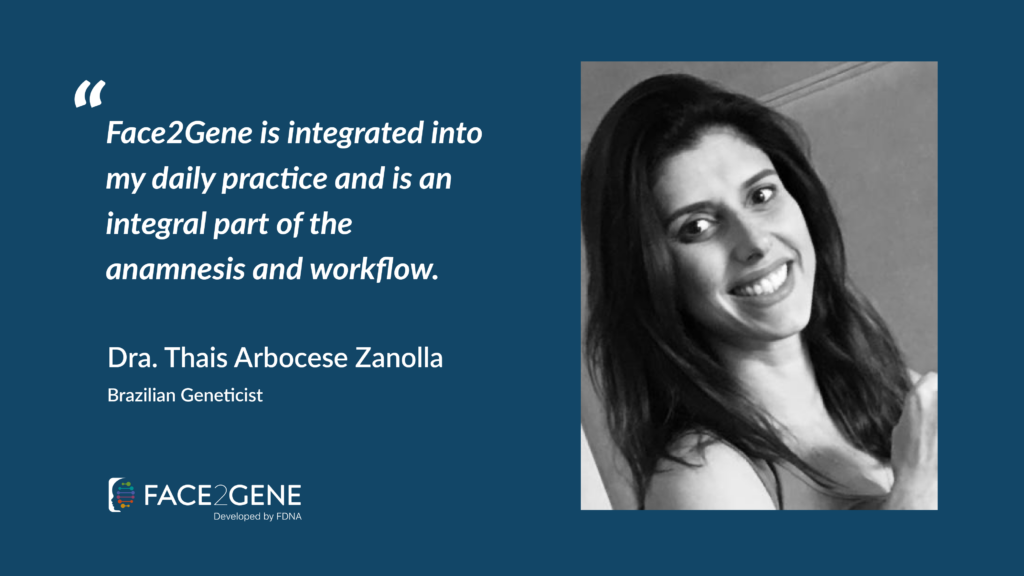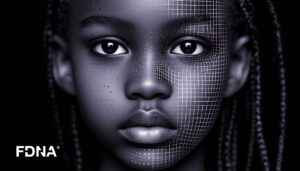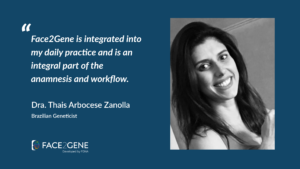In São Paulo, Brazil, we had the opportunity to get a few moments of Dr. Thais Arbocese Zanolla’s busy schedule to discuss how she uses Face2Gene in her genetics practice, where the app helps her and where it does not. As she explained it to us, Face2Gene helps her save valuable time during consultation and improves results, so she uses the tool even when no clear facial dysmorphic features are present. She highlighted that the AI can underline different clinical presentations that may have been overlooked. This is what she said:
I started using Face2Gene four years ago. What caught my attention then was not only the phenotypic facial analysis, but also the functionality of the Overview screen – where I fill out the patients’ info and the clinical notes. In many cases, I already had the patient chart including photos previously taken, so that I could easily use Face2Gene to capture the patient’s data, phenotype description and measurements.
This saves me time during the consultation because Face2Gene does a calculation, provides all relevant links, and I don’t have to look in books for specific info and growth curves. Since I started using Face2Gene, it continues to improve and update, allowing me to use the image analysis technology more thoroughly.
Today, Face2Gene is integrated into my daily practice and is an integral part of the anamnesis and workflow. I annotate the results of my patient’s physical examination directly in Face2Gene rather than in the medical record, and print the report from Face2Gene.
Check out how to incorporate Face2Gene into your workflow.
Face2Gene significantly helps us in our practice. Sometimes we have an idea of a possible syndrome, and Face2Gene confirms our hypothesis. And sometimes, the opposite happens. For example, I had a patient with Velo-Cardio-Facial Syndrome (VCFS), but she didn’t have congenital heart disease, so I did not think this was the correct diagnosis. However, when I uploaded her photo to Face2Gene, the tool listed VCFS in a top rank. I still couldn’t believe it! But the genetic test came back indicating a microdeletion in chromosome 22, thus confirming the diagnosis.
I think artificial intelligence technology exists to help us as doctors. It will never replace the doctor in the clinic, but it will increasingly shorten the time to diagnosis and save us all much-needed time.
Want to master Face2Gene? Check out all the tutorials available



